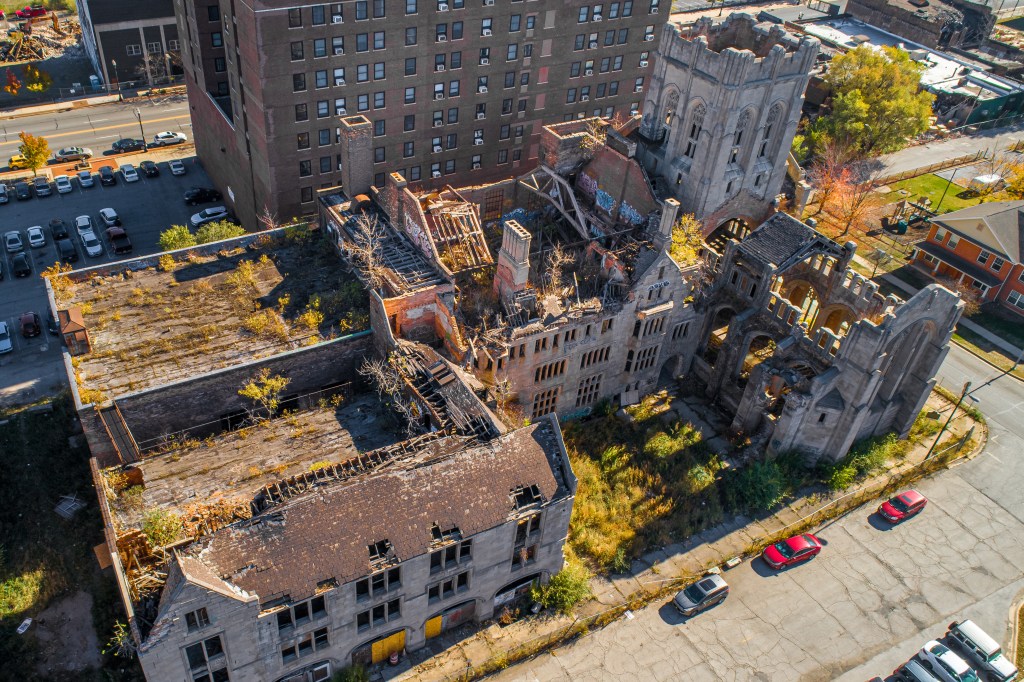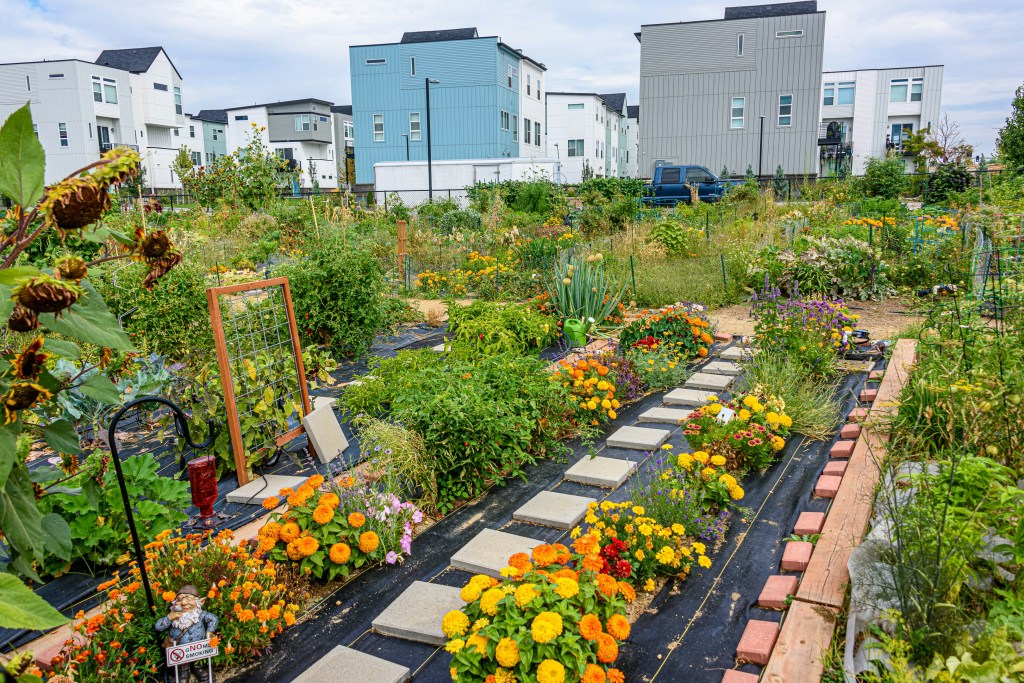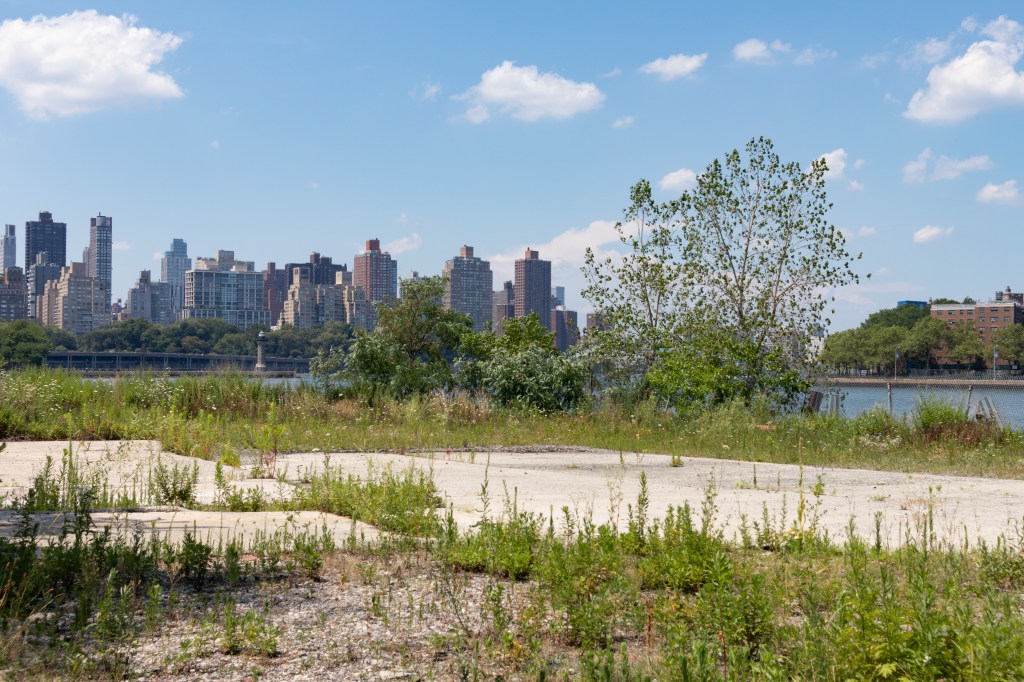Future Property Trends to Watch in 2025 and Beyond

In the ever-evolving landscape of urban development, the housing market, and property management, one issue that persistently demands attention is the prevalence of vacant properties amidst a tightening housing inventory. From deserted residential homes to abandoned commercial lots, these unoccupied spaces pose a myriad of challenges and potential opportunities for communities and stakeholders.
There are various facets of vacant property issues. Whether it’s understanding the economic impact, the environmental concerns, or exploring innovative solutions for revitalization, this discussion seeks to provide a comprehensive overview of why addressing vacant property matters now more than ever.
Join us as we navigate through the vacant property landscape, uncovering the complexities and envisioning a future where every space holds value and purpose.
Economic Impact of Vacant Properties on Communities
The economic ramifications of vacant properties extend deeply into the fabric of local economies and communities, affecting various facets from municipal costs to community well-being.
Municipal impact
One of the most direct impacts of such properties is their burden on municipal resources.
Vacant buildings, susceptible to crime, fire, and misuse as dumping grounds, disproportionately consume the efforts and budgets of law enforcement and fire departments.
The increased crime rate associated with easily accessible vacant properties strains the police force and the community’s sense of security.
In addition, neglected structures are prone to electrical and maintenance issues that lead to fires, intensifying the strain on firefighting resources through injury and loss of life among firefighters.
Economic impact
Beyond the immediate dangers posed by these vacant properties, local governments face significant financial implications regarding demolition and subsequent maintenance costs.
Demolition of these structures is expensive, with cities spending hundreds of thousands to millions annually, only to face the continuous expense of maintaining the cleared lots. This cycle of spending diverts valuable resources away from other potential community enhancements and services.
Additionally, the presence of vacant properties has a detrimental effect on local tax revenues, a crucial source of funding for any municipality. These unoccupied structures often fall into tax delinquency, contributing minimal taxes due to their decreased value and, in turn, devaluing surrounding properties. Residents also face challenges in saving for a down payment due to the economic impact of vacant properties, which further complicates their financial stability.
This decrease in neighborhood property values leads to a vicious cycle, further exacerbating the community’s economic impact.
Community effects
Homeowners in areas with high vacancies face their own challenges, including increased insurance premiums, a decreased quality of life, and often a negative impact on economic growth. The blight of vacant properties contributes to social fragmentation, eroding residents’ sense of community and belonging. Additionally, high vacancy rates can lead to a stagnation or decline in housing prices and deter job growth in the area.
The cumulative effect of these various factors underscores the profound economic and social consequences of vacant properties on local communities, highlighting the need for strategic interventions and revitalized urban planning efforts to mitigate these effects.

Emerging Trends in Vacant Property Utilization by Real Estate Investors
In recent times, repurposing and utilizing vacant properties have become a notable trend in urban and rural developments. This approach not only addresses the issue of unused space but also contributes to the economic and social revitalization of communities.
Repurposing vacant properties
Various strategies have been employed to breathe new life into these dormant spaces, reflecting a range of innovative and community-focused uses.
One significant trend is the transformation of vacant properties into seasonal housing. This concept is particularly popular in destinations known for tourism, such as beach towns and ski resorts. Repurposing vacant properties into seasonal housing can also impact the rental market by altering the supply of available long-term rentals.
These properties cater to part-time residents seeking recreational or occasional use, including hunting cabins and second homes. This utilization taps into the demand for short-term accommodations, providing an income source for property owners and local economies while ensuring that properties are maintained and supervised.
Emerging trends
The adaptive reuse of vacant commercial spaces has emerged as a sustainable solution to urban decay. This practice involves reconfiguring empty buildings for new purposes and preserving their cultural and historical value.
This approach has multiple benefits, including promoting sustainability by reducing the need for new constructions and maintaining the architectural heritage of older structures. Entrepreneurs, artists, and community groups often champion these projects, transforming vacant commercial properties into cultural hubs, offices, or community centers.
These trends highlight a broader movement towards creative and flexible space use, reflecting a shift in how communities view and capitalize on vacant properties.
Cities and towns are finding innovative ways to address housing shortages, preserve history, and bolster local economies by repurposing vacant land and buildings.

Technological Innovations in Property Management and Reuse
In recent years, the landscape of property management has undergone a significant transformation, largely due to the advent of new technologies. These innovations are changing how vacant properties are managed and how they are revitalized for future use.
Property management technology
Vacant property tech is becoming increasingly sophisticated, incorporating IoT devices for real-time monitoring, AI for predictive maintenance, and blockchain for secure, transparent transactions.
These technologies offer property managers and owners control and insights into their properties, regardless of their physical location. This shift is not just about efficiency but also about opening up new possibilities for reusing and repurposing vacant land and buildings.
Technology trends
The trends in real estate technology are also indicative of a broader shift towards sustainability and smart urban planning. Trends in interest rates influence the adoption of real estate technology and housing affordability, as high rates can decrease demand and affordability, while lower rates can make mortgages more accessible. For example, property reuse technology enables developers and city planners to envision and execute projects that breathe new life into abandoned or underutilized spaces. These projects contribute to the economic revival of neighborhoods and address pressing urban challenges like housing shortages and environmental sustainability.
Moreover, vacant land management tools are evolving to assist in strategically planning and developing vacant land. These tools help in assessing the potential of such lands for various uses, be it commercial, residential, or community gardens, thus playing a crucial role in the sustainable development of urban areas.

Sustainability and the Green Transformation of Vacant Properties
Integrating sustainability practices into the redevelopment of vacant properties is a growing trend reshaping urban landscapes. As cities worldwide face the repercussions of climate change, repurposing unused lands into eco-friendly spaces has become a critical strategy.
Vacant land sustainability
Climate adaptation planning plays a pivotal role in this context. It involves making adjustments to mitigate the effects of climate change, aiming to reduce harm to communities and the built environment.
By focusing on sustainable redevelopment, cities can become more resilient against climate-induced adversities, boosting their capacity to adapt to changing environmental conditions.
One significant benefit of repurposing vacant properties is reducing urban heat. Urban areas are particularly vulnerable to extreme heat due to their extensive use of concrete and other heat-retaining materials.
Transforming vacant lots into green spaces, such as mini gardens and parks, can mitigate this effect. Planting native trees and removing heat-reflecting surfaces can also create cooler urban environments, enhancing their livability.
Green property reuse
Transforming vacant lots into green spaces, such as mini gardens and parks, can mitigate this effect. Sustainable redevelopment efforts can contribute to a balanced market by stabilizing housing supply and demand. Planting native trees and removing heat-reflecting surfaces can also create cooler urban environments, enhancing their livability.
Furthermore, stormwater management is another critical aspect of sustainable redevelopment. Climate change has led to increased instances of flooding, which causes substantial property damage and severely affects urban areas.
Implementing green infrastructure in the redevelopment of vacant properties can play a vital role in managing these challenges. Techniques like permeable pavements, rain gardens, and green roofs can slow the release of stormwater, helping to control urban flooding and prevent damage.
Through strategic planning and the adoption of green principles, it’s possible to turn vacant properties into assets that contribute to the sustainability and resilience of urban areas.

Policy and Regulatory Changes Shaping the Future of Vacant Properties
In recent years, a significant focus has been on analyzing policy changes that impact the handling and repurposing of vacant properties. The National Association of Realtors and the National Association of Home Builders play a crucial role in shaping these policy changes by providing insights and predictions on housing trends and market forecasts.
These policies encompass a wide range of areas including vacant property policies, real estate regulations, updates in property law, and regulations concerning vacant land. The aim is to address and repurpose unused spaces, fostering sustainable development and growth in both small cities and urban centers.
Sustainable development is at the forefront of these initiatives. By focusing on the sustainable repurposing of vacant properties, cities can encourage growth and revitalization in a manner that respects environmental limits and community needs. This approach promotes the efficient use of land and supports the growth of urban centers through investment in infrastructure and technology. Such developments are pivotal in making cities more livable and economically vibrant.
Additionally, these policy changes are spurring growth in small cities. Small cities benefit from strategically repurposing vacant properties, attracting investment and residents. This growth is further supported by incentives like rebates on home loan interests, which aim to stimulate the real estate market. By making home loans more accessible, these policies help facilitate the growth of both small cities and urban centers, contributing to a more balanced and sustainable urban development.
Another key area of focus is the promotion of energy-efficient buildings. By encouraging the construction and repurposing of buildings to be more energy-efficient, these policies aim to minimize the effects of climate change. This is particularly appealing to those seeking sustainable housing options. Energy efficiency reduces buildings’ environmental footprint and offers long-term savings for occupants, making it an attractive feature in the real estate market.
Community-Led Initiatives and the Role of Social Enterprises
Communities and social enterprises are increasingly leading efforts to breathe new life into vacant spaces, demonstrating innovative approaches to urban revitalization and social impact.
Community redevelopment
By focusing on community property initiatives, these groups are transforming neglected areas into vibrant community assets. Projects range from transforming vacant properties with the help of community-led groups to comprehensive property redevelopment led by the community itself. These initiatives address the blight of empty spaces and foster a sense of ownership and pride among local residents, contributing to the overall social impact on neighborhoods.
Case study: Philadelphia’s “Park in a Truck”
In Philadelphia, a remarkable collaboration is underway between the Landscape Architecture Program at Thomas Jefferson University and the Citizens Planning Institute. This partnership has led to the creation of unique kits designed to empower residents to reclaim and repurpose vacant lots into functional and enjoyable spaces like parks, gardens, and green areas.
One notable initiative is the “Park in a Truck” project, which provides a comprehensive toolkit to assist residents and community groups in designing, constructing, and maintaining these new green spaces. This innovative approach beautifies neighborhoods and promotes community engagement and environmental sustainability.
Another significant tool developed through this collaboration is “CPI in a Box.” This resource is designed to equip newly trained neighborhood leaders with the necessary tools to implement solutions tailored to their communities’ needs.
By providing practical resources and guidance, “CPI in a Box” empowers local leaders to take charge of the revitalization efforts in their neighborhoods, fostering a culture of active participation and sustainable development. Together, these initiatives highlight the powerful role that collaboration between educational institutions, community organizations, and residents can play in transforming vacant spaces into thriving community assets.
Challenges and Opportunities in Urban and Rural Contexts
Vacant properties present unique challenges and opportunities, varying significantly between urban and rural settings.
Vacant land urban challenges
In urban areas, vacant land and properties often face specific hurdles, including regulatory complexities, higher redevelopment costs, and sometimes issues related to crime or vandalism. These challenges often stem from urban development pressures, making it difficult for stakeholders to navigate the process of bringing these properties back into productive use.
Despite these challenges, urban settings also offer significant opportunities for property development, given the high demand for residential and commercial spaces. Innovative solutions such as mixed-use developments, green spaces, or community hubs can transform these vacant spaces into vibrant parts of the urban fabric.
Rural vacant property issues
Conversely, rural areas face different issues when it comes to vacant properties. Many rural communities have been hit hard by economic shifts, such as the outsourcing of manufacturing jobs, which has led to widespread unemployment and contributed to the opioid epidemic.
These economic challenges have a cascading effect on the quality of life in rural areas, reducing tax revenue and, in turn, limiting the ability of local and state governments to provide necessary services.
This economic downturn also means that rural vacant properties are less likely to be considered for reuse initiatives due to a lack of community groups and funding dedicated to such efforts.
The situation in rural areas calls for tailored approaches that address the unique economic and social dynamics at play, potentially focusing on revitalizing local economies and leveraging rural communities’ natural and cultural assets.

Housing Market Forecast
As we look towards 2025 and beyond, the housing market is poised for significant changes. According to the U.S. News Housing Market Index, a comprehensive data-driven overview of the housing market nationwide, several factors will shape the landscape in the coming years. One of the most notable influences will be the aging population, which is expected to drive demand for different types of housing, such as senior living communities and accessible homes.
Additionally, the rising costs associated with climate change will play a crucial role. Homeowners and real estate investors will need to consider the increasing expenses related to climate resilience, such as flood defenses and energy-efficient upgrades. These costs could impact home prices and the overall affordability of housing.
Artificial intelligence (AI) is another game-changer on the horizon. AI’s expansion into high-skilled jobs could affect up to 40% of global employment, leading to shifts in housing demand as job markets evolve. Moreover, AI-driven technologies are expected to revolutionize homebuilding methods, potentially making construction more efficient and cost-effective.
Overall, the housing market in 2028 will likely look quite different from today, shaped by these emerging trends and challenges.
Real Estate Investors: Trends to Watch
For real estate investors, staying ahead of the curve means keeping an eye on several key trends that are set to influence the market in the coming years. One of the most significant trends is the rise of AI and its impact on the workforce. As AI continues to automate high-skilled jobs, the demand for certain types of properties may shift, affecting both residential and commercial real estate.
The expansion of hybrid work schedules is another trend to watch. With more people working from home part-time, the demand for office space could decrease, impacting property tax revenues and the commercial real estate market. Investors will need to adapt to these changes by considering flexible and multi-use properties.
Climate change is also a critical factor. The increasing costs associated with climate resilience will affect homeowners and real estate investors alike. Properties in areas prone to natural disasters may see higher insurance premiums and maintenance costs, influencing investment decisions.
The total cost of ownership is becoming a key metric in the housing market. Investors are increasingly looking at long-term costs, including maintenance, energy efficiency, and climate resilience, rather than just the purchase price.
Another emerging trend is the rise of collective home buying. More buyers are joining forces with friends and family members to purchase homes, making it easier to afford down payments and mortgage rates. This trend could reshape the housing market, particularly in high-cost areas.
Finally, AI is set to revolutionize homebuilding production methods. New technologies could make construction faster, cheaper, and more sustainable, offering exciting opportunities for real estate investors.
Demographic Shifts
Population changes return to pre-pandemic trends
The demographic landscape of the United States is shifting back to pre-pandemic trends, with significant implications for the housing market. In 2023, the nation saw a population increase of over 1.6 million people, with the South accounting for nearly 90% of this growth. The West also experienced substantial population gains, making up most of the remaining balance.
These regional population changes are expected to drive housing demand in the South and West, leading to increased home sales and potentially higher home prices in these areas. As more people move to these regions, the housing supply will need to keep pace to avoid a housing market crash and ensure housing affordability.
The return to pre-pandemic population trends also highlights the importance of understanding local housing market predictions. Areas experiencing population growth will likely see a surge in housing demand, impacting everything from housing costs to existing home sales. Real estate investors should pay close attention to these demographic shifts, as they will influence investment opportunities and strategies.
In summary, the population changes returning to pre-pandemic trends will have a profound impact on the housing market, shaping housing demand, supply, and affordability in the years to come.
Predictions for the Future: What Lies Ahead for Vacant Properties?
As the real estate landscape adapts to new technologies and shifting economic conditions, vacant property trends are set to transform significantly. Industry experts anticipate that the future of vacant properties will involve smarter, more tech-driven management solutions, catering to both urban and rural areas with innovative approaches to vacancy risk and property security. Property market predictions suggest a growing emphasis on sustainable development, with vacant land increasingly repurposed for eco-friendly projects and mixed-use spaces, reflecting broader shifts in real estate future trends.
The evolving landscape of vacant property insurance will also play a crucial role in these developments, as insurers and property owners alike seek better ways to mitigate risks. Forecasts indicate that insurance solutions for unoccupied buildings will become more specialized, with a focus on digital monitoring systems, remote management tools, and predictive analytics. As these trends unfold, vacant land forecasts and property industry predictions point to a future where vacant spaces are proactively managed, protected, and optimized for both short-term needs and long-term value.
Conclusion: Pathways to a Resilient and Vibrant Future
Tackling the issue of vacant properties requires a forward-thinking approach, focusing on the present and creating a resilient and vibrant future for our communities.
Adopting innovative property management strategies that address current challenges and anticipate future needs and opportunities is essential. Doing so can transform these vacant spaces into vibrant community properties, contributing to our neighborhoods’ overall well-being and dynamism.
To achieve this, we must explore a variety of vacant property solutions that go beyond conventional methods. This includes reimagining these spaces in ways that serve the community, such as through the creation of green spaces, community centers, or affordable housing, all of which contribute to a resilient property future. Leveraging innovative property management techniques, we can ensure these properties are not merely maintained but are thriving components of the community.
Furthermore, developing a comprehensive property future strategy is crucial. This strategy should encompass not just the immediate repurposing or sale of vacant properties but also consider long-term sustainability and the role these properties play in the community’s fabric. By being proactive and innovative in our approach to vacant property management, we can ensure that our communities are thriving today and well-positioned for a vibrant and resilient future.
Sources
https://yvpc.sph.umich.edu/wp-content/uploads/2022/11/Americas-Vacant-Lot-Landscape-National-Survey-Report.pdf
https://files.hudexchange.info/resources/documents/VacantPropertiesTrueCosttoCommunities.pdf
https://www.census.gov/library/stories/2023/05/vacant-seasonal housing.html#:~:text=As%20the%20nation%20recovered%20from,vacant%20housing%20in%20the%20county.
https://www.datacenterfrontier.com/executive-roundtable/article/33016172/roundtable-tips-on-adaptive-reuse-of-vacant-properties-for-data-center-design-and-development
https://communityprogress.org/blog/vacant-properties-climate-resilience/#:~:text=Ways%20Vacant%20Properties%20Can%20Help%20Manage%20Stormwater&text=Redeveloping%20vacant%20land%20and%20properties,other%20environmental%20and%20community%20benefits.
https://www.linkedin.com/pulse/policy-insights-shaping-future-real-estate-2024-navigating-yqr5f/
https://www.pewtrusts.org/en/research-and-analysis/articles/2023/06/06/neighborhoods-benefit-from-community-led-efforts-to-transform-vacant-lots
https://communityprogress.org/blog/approaches-to-rural-property-vacancy-in-law-and-policy/
https://iconsofrealestate.com/2024-housing-market-predictions/

